Läti laskurid Esimeses maailmasõjas I Maailmasõda
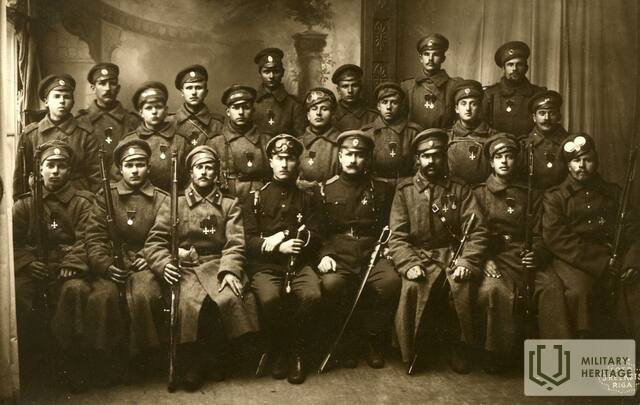
Esimene maailmasõda oli pöördepunkt Euroopa ajaloos ja nii oli see ka Läti ajaloos. Juba 1915. aastal puhkes sõda kogu Euroopas ja sama aasta suvel sai alguse lugu kangelaslikest läti püssidest. Tuhanded vabatahtlikud Lätis läksid sõjaväkke ja asutasid oma rahvusüksused. Tuhanded mehed tahtsid vabatahtlikult kaasmaalastega külg külje kõrval vaenlasele vastu astuda.
1915. aasta kevadel tungisid Saksa väed Läti territooriumile ja pärast peaaegu kuus kuud kestnud sõda rinne stabiliseerus, lõhestades Läti kaheks osaks. Rindejooneks ja sümboolseks piiriks sai Daugava jõgi, mille kallastele jäi palju põlismaju ja sugulasi. Läti laskurite kangelaslikud eelkäijad olid Daugavgrīva linnuse kaks ühendpataljoni, mis pidasid raskeid lahinguid pealetungivate sakslaste vastu.
1915. aasta kevadeks oli Vene sõjaväevõimudele laekunud mitmeid ettepanekuid luua Läti rahvuslikud sõjaväeosad. Need kõik lükati aga tagasi. Pärast Daugavgrīva kindluse rahvuskaardi pataljonide edukaid lahinguid Jelgava lähedal 1915. aasta mai alguses tekkis taas mõte Läti sõjaväeformatsioonide vajadusest. Selle eest võttis sõna üks tolle aja silmapaistvamaid Läti poliitikuid - Vene riigiduuma saadik Jānis Goldmanis. Selle idee ja selle elluviimise võimaluste arutamiseks kutsus ta 1. juunil 1915 salanõupidamisele Läti intelligentsi, sõjaväe- ja majandusringkondade silmapaistvad esindajad.
Vene armee katastroofiline olukord 1915. aasta suvel oli üks olulisemaid tegureid Läti üksuste moodustamiseks soodsa otsuse saavutamisel, paljutõotav läti käsukeel, lätikeelsed pealdised lahingulippudel ja erilised rinnatähendused. Säilisid ka lootused poliitilisteks reformideks pärast sõja lõppu - suurema omavalitsuse kehtestamine Lätis, haldusreform ja kultuuriautonoomia.
10. augustil 1915 avaldas ajaleht Dzimtenes Vēstnesis kirjanike Ata Ķeniņši ja Kārlis Skalbe kirjutatud ning Venemaa riigiduuma liikmete Jānis Goldmanise ja Jānis Zālītise pataljonide poolt alla kirjutatud kutse “Koguge Läti lippude alla ja kaitske oma kodumaad Saksa sissetungijate eest.
Esimestel päevadel saabus nii palju mehi, et korralduskomiteed töötasid isegi öösiti. Vabatahtlike hulgas oli palju noori mehi, kes polnud kogenud ei sõda ega teenistust, kuid nende entusiasm tõmbas ligi ka vanemaid mehi, kes teadsid, kuhu lähevad. Kokku kandideeris umbes 8000 vabatahtlikku, Läti laskurpataljonides oli kogu I maailmasõja jooksul kuni 25 000 meest. Kuni 1916. aastani ühendasid Läti laskurid Daugavgrīva pataljonis, Riia, Kurzeme, Vidzeme, Zemgale, Tukumsi, Bauska, Valmiera ja Reservi pataljonides, mis hilisematel sõja-aastatel nimetati ümber rügementideks.
Läti laskurpataljonid läksid esimestesse lahingutesse 1915. aasta oktoobris, et peatada sakslaste rünnak Riiale. 1916. aasta suvel ja sügisel võitlesid laskurid Surmasaarel, jaanuaris 1917 toimusid Jelgava operatsioon ehk jõululahingud Tirose lähedal Ložmetējkalnsis;
Pärast Esimese maailmasõja lõppu jäi osa läti laskurmehi Venemaale ja võitles kodusõjas rinde eri külgedel, osa osales vabadusvõitlustes Lätis. 1920. aastal, rahuaja saabudes, naasis Lätti suur hulk endisi püssimehi, kes olid viimased viis aastat sõjas veetnud.
Umbes 3000-st enne 1917. aastat langenud läti laskurist on 870 maetud Riia vennaskalmistule. Muudel põhjustel ei olnud võimalik neid Riiga transportida, seetõttu leidub Läti sõdurite matuseid Slokas, Ķemeris, Tīnūžis, Ķekavas ja mujal.
Lisaks Esimese maailmasõja sündmustele käis Lätis tegelikult veel üks võitlus - võitlus lätlaste enesekindluse eest ja tol ajal sündis ka lootus oma riigi loomiseks. püssivõitlus.
Rohkem teabeallikaid
1. Dokumentaalfilm "Läti lippude all. Kangelaste sünd", 2015. Saadaval: https://www.youtube.com/watch?v=GmZV74r6EbI [vaadatud: 04.05.2021].
2. Hingede tuisk. Digimuuseum. Kättesaadav: https://www.dveseluputenis.lv/lv/laika-skala/notikums/67/latviesu-inteligence-nolemj-dibinat-strelnieku-vienibas/ [vaadatud: 05.05.2021].
3. Zariņš K. “Esimene maailmasõda Lätis ja Läti laskurite võitlejad”, 2015. Kättesaadav: https://www.sargs.lv/lv/pirmais-pasaules-kars/2015-07-15/pirmais- pasaules-kars- latvia-and-latvian-strelnieku-cinas [vaadatud: 05.05.2021.].
Teie kommentaarid
Seotud ajajoon
Seotud objektid
Jõululahingu Muuseum ja vabaõhunäitus
Jõululahingu mälestuspark ja -muuseum asub Jelgava piirkonnas Valgunde vallas Mangaļi talukohas. Muuseum on Läti Sõjamuuseumi filiaal, see avati 2005. aastal ja see asub piirkonnas, kus toimus Jõululahing. Lahingupaikades on ikka veel säilinud ainulaadsed Esimese maailmasõja aegsed kaitserajatised. Muuseumis eksponeeritakse lahinguväljalt leitud esemeid. Vabaõhuekspositsioon tutvustab rekonstrueeritud kaitserajatisi. Muuseumi ümbruses asuvad turismimarsruudid ja õpperajad. Esimese maailmasõja aegsete kaitserajatiste vabaõhuekspositsioon ja siseväljapanekud on külastajatele avatud iga päev. Ložmetējkalnsi ümbrusest võib endiselt leida ainulaadseid tõendeid Esimese maailmasõja aegsetest kaitserajatistest. Seal asub 27 m kõrgune vaatetorn, kust avaneb panoraamvaade piirkonnale, kus toimus Jõululahing, mis on tõenäoliselt kõige tuntum ja dramaatilisem Esimese maailmasõja sündmus Lätis. Sellel on eriline koht Läti sõja- ja kultuuriajaloos. Jõululahingut seostatakse peamiselt Läti küttide rünnakuga Saksa armee üksuste vastu äärmiselt rasketes ja ebasoodsates oludes. See oli ainulaadne olukord, kus suurt lahinguoperatsiooni alustati ilma suurtükiväe toetuseta.
Jõekraavid
Marsruudi esimene etapp on jõeoru keskel bussipeatuses.
1. septembri hommikul 1917 alustasid sakslased pärast kolm tundi kestnud suurtükituld Ikšķile lähedal Daugava kolme puidust pontoonsilla ehitamist. 1159 kahurist ja miinipildujast lasti välja ligikaudu 560 000 padrunit, mis surusid täielikult maha 66 Vene kahurit ja sundisid Daugava paremal kaldal taanduma 186. diviisi. 12. Vene armee ülem kindral Parskis andis 43. korpusele vaheajal korralduse vasturünnakule ning andis korpuse ülemale üle 33., 136., 138. diviisi, 116. diviisi ja 2. Läti laskurbrigaadi.
1. septembri pärastlõunal said läti püssimehed korralduse võidelda Daugavat ületanud sakslaste vastu. 2. Läti laskurbrigaad Ropažist suundus ründavatele Saksa üksustele ning 5. Zemgale Läti laskurpolgu sõdurid jõudsid pärastlõunal nelja paiku Väike-Jugla jõe paremkalda ääres kindlustatud positsioonidele. Pärast suurtükituld algas 2. septembri keskel rünnak Läti laskurite positsioonidele. Kaitselahingud toimusid 14 km pikkusel rindel piki Väikese Jugla paremkallast. 2. Läti laskurbrigaadi sõdurid mõne kahuriga astusid vastu arvuliselt ja tehniliselt tugevamale Saksa vägede rühmale, kes kasutasid rünnakul ka lennundust, paugutit ja kahuritäidisega kahurigranaate. Püssidel õnnestus rinnet kangelaslikult hoida 26 tundi kuni 3. septembrini. Oma ülesande täitnud ellujäänud Läti sõdurid astusid 12. väejuhatuse käsul Sigulda ja Cēsise positsioonidele. Kaotused olid väga rängad - 5. Zemgale ja 6. Tukumsi Läti laskurpolk nokauteerisid enam kui pooled võitlejatest, 7. Bauska ja 8. Valmiera Läti laskurpolk said vähem kannatada.
Tīnūži Mõisa Kultuuripärandikeskus
Tīnūži Mõisa Kultuuripärandikeskus asub Tīnūži külas Ogre piirkonnas, 7 km kaugusel Ogre ja Ikšķile linnadest. Esimesed kirjalikud tõendid mõisa kohta pärinevad 16. sajandist. 18. sajandi keskpaigani oli mõis väikeste ja tähtsusetute hoonetega majapidamine, kuid aja jooksul kasvas see suureks kompleksiks. Esimese maailmasõja ajal toimusid siin Vene ja Saksa armeede vahel lahingud, milles osalesid ka Läti kütipolgu sõdurid. Vabadussõja ajal asus Tīnūži mõisas Läti sõjaväe 1. Valmiera jalaväepolgu staap ja seal hoiti soomusautosid. 1932. aastal anti mõis Läti Sõjainvaliidide Liidule, mis pakkus majutust sõjaveteranidele ning hoolitses nende eest. Teise maailmasõja ajal 1943. aastal viidi Eestist Tīnūži mõisa üle SS-Jagdverband Ost. See oli üksus, mis valmistas ette sõdureid võitluseks Punaarmee vastu. Luuramist, partisanisõja taktikat ja sabotaaži õpetati ka läti sõduritele. Tīnūži mõisa härrastemaja hävitati, kui Punaarmee liikus Riia suunas. Tänapäeval on näha kaunist maastikku ajalooliste hoonetega Väikese Jugla (Mazā Jugla) jõe kaldal. Tīnūži Mõisa Kultuuripärandikeskuses saab näha ajaloolistele sündmustele, sh Läti küttidele, pühendatud eksponaate.
Väikese Jugla lahingu monument Tīnūžis
Asub Ikšķile piirkonnas, Tīnūži külas, maantee ääres Tīnūži algkooli lähedal.
Mälestusmärk I maailmasõja ajal Saksa armee vastu võidelnud läti laskuritele. 1.-2.septembril 1917 toimunud lahing Väike-Jugla jõel oli Riia operatsiooni kulminatsiooniks. Saksa armee alustas rünnakut Ikšķilele eesmärgiga vallutada Riia ja vallutada 12. Vene armee. Saksa armee üksused, ületades pontoonsildade kaudu Daugava, jõudsid Väike-Jugla jõe lähedusse, kus nad blokeerisid Läti laskurmeeste poolt. Neile anti käsk vastane edasi lükata, kuni kogu Vene 12. armee lahkub piiramisrõngast, ilma et Saksa armee neid vangi oleks saanud. Võitlused võtavad mõlemale sõdivale poolele rasket lõivu.
Täna saab näha skulptor Jānis Karlovsi mälestussammast "Kangelaste altar", mis avati 2005. aastal ja mis on pühendatud Läti võitlejatele. Tīnūži mõis, kus näitus asub, jääb 300 meetri kaugusele.
Kuulipildujamägi
Asub Jelgava piirkonnas kiirtee A9 lähedal.
Ložmetējkalns on I maailmasõja lahingupaik, mis on Läti ainus riikliku tähtsusega kultuuri- ja ajalooline kaitseala. See asub Pika luite ääres, mis on osa Nordeķi - Kalnciemsi luiteharjast. Kuulipildujamäe nimi sai alguse ajast, mil seal asusid raskesti hõivatavad Saksa armee kindlustused, mida kaitses tugev kuulipildujatuli.
Jõululahingud on ilmselt tuntuim ja dramaatilisem Esimese maailmasõja sündmus Läti ajaloos. Sellel on eriline koht Läti sõja- ja kultuuriloos. 1917. aastal ründasid Vene armee Läti laskur- ja Siberi üksused Ložmetējkalnsi ja hõivasid selle. Vangistati vähemalt 600 vastast, samuti väärtuslikud trofeed, näiteks 19 kuulipildujat. See oli jõululahingute olulisim õnnestumine ja suurim saavutus, mille Vene väed Riia rindel saavutasid. Läti püssimehed uskusid, et väärivad mägismaa vallutajate au.
Tänapäeval asub seal vaatetorn, kust avaneb vaade kunagistele lahingutele. Piirkonnas saab näha mälestusmärke ja sõjaaegseid tõendeid. Lähedal asub Silenieki vendade kalmistu.
Jõululahingute mälestusmärk Antinu vennaskonna kalmistul
Asub Babīte linnaosas, tee servas endise Antiņi maja ja vana ravimite lao lähedal.
Antiņi ehk Tīreļi sõdurite kalmistu rajati Esimese maailmasõja ajal. Piirkonnas asusid Vene impeeriumi sõjaväe kaitsepositsioonid. 1917. aastal asus jõululahingute ajal selle lähedal 5. Zemgale Läti laskurpolgu staap ja haigla koos ravimite laoga.
Ööl vastu 5. jaanuari 1917 maeti kaheksa tohutu lõkke valguses sõjaväelise auavaldusega 105 5. Zemgale Läti laskurpolgu võitlejat. Nad langesid lahingus Saksa armee vastu või surid vigastustesse. Matusetseremooniat juhtis rügemendi ülem Jukums Vācietis. Hilisematel aastatel maeti kalmistule ka teiste Vene armee üksuste sõdureid. 1925. aastal avati kalmistul arhitekt Eizen Laube monument ja territoorium haljastati. Kalmistule maetud 3800 sõduri kohta leiab infot mitmel pool, kuid seda tuleb hinnata ebatõenäoliseks ja kontrollimata.
Teine mälestussammas esimese iseseisva Läti sõduritele Marupel
asub Mārupe linnaosas, enne golfiklubi "Viesturi" hoonet metsateel, golfi treeningväljaku sildi vastas.
Projekti idee autorid on Mārupe piirkonna giid Miķelis Jakunovs ja maatüki "Dumpmaļi" omanik Visvaldis Dumpis.
2014. aasta novembris, Läti patriootide nädalal, avati Läti sõdurite auks teine mälestussammas Läti sõduritele Dzilnupīte lähedal, Mārupe ja Babīte maakondade piiril, ühes Esimese Maailma lahingupaigas. Sõda. Monumentide ideeautor ja rahastaja on Visvaldis Dumpis, need on loonud skulptor Ivars Feldbergs. Mälestusmärgi omanik Visvaldis Dumpis soovib, et siia koguneks rahvas mitte ainult 14. juunil ja 25. märtsil, vaid ka 10. juulil, riigikaitseväe asutamise aastapäeval ja muudel lätlastele olulistel ajaloosündmustel.
9. novembril 2018 avati monumendi juures informatiivne stend paiga ajaloost ja vaatamisväärsustest. See on pühendatud paiga ajaloole, jutustades siin kunagi eksisteerinud "Adieņi" majadest ja seal elavast Ķurbja perekonnast, Esimese maailmasõja sündmustest selles piirkonnas, aga ka ajaloolistest objektidest, mida enam ei saa. looduses nähtud – Dūči sild, Dzirnava tiik ja veski, jahivannid.
Läti sõdurite endine meditsiiniladu
Asub Babīte linnaosas, Antiņi sõdurite kalmistu ja taastatud kaevikute lähedal.
I maailmasõja ajal asusid sellel alal alates 1915. aastast Vene impeeriumi armee kaitsepositsioonid. 1917. aastal asus Antiņi majas jõululahingute ajal 5. Zemgale Läti laskurpolgu staap ja laatsaret koos ravimite laoga, mida juhtis väljapaistev Läti sõjaväearst Pēteris Snīķeris.
Jõululahingute ajal toimusid eriti karmides ja ebasoodsates tingimustes Läti laskurite rünnakud Saksa armee üksustele. Lahingus saadud vigastusi oli igasuguseid - tulirelvadest saadud haavu, muljumisi ja vigastusi, aga ka külmumist. Tuhandetele Läti sõduritele tuli osutada õigeaegset arstiabi. Korraldati nii, et vigastatu saaks võimalikult kiiresti abi. Lahinguväljal olid relvastamata parameedikud, kes andsid esmaabi ja toimetasid haavatuid ohtlikest kohtadest välja. Lahingupaikade lähedusse rajati riietumispunktid, kus jätkati hooldamist ja sorteerimist. Haavatud sõdurid evakueeriti kärudes ja autodes haiglatesse või haiglatesse. Lazarete lähedale rajati surnuaiad, kuhu maeti surnuid.
Tänapäeval saab näha vana ravimipoodi. Läheduses on Antiņi sõdurite kalmistu, I maailmasõja kaevikud ja kaevikud. Keskkond sobib metsas jalutamiseks, paljastades eredaid tõendeid militaarpärandist.
Esimese maailmasõja ajalooline uurimistee ja kaev
Asub Olaines, Olaine ajaloo- ja kunstimuuseumi läheduses.
Ajalooline trass rajati 2018. aastal I maailmasõja aegsete Vene armee kindlustuste asukohale, mis kuulusid piirkonna kaitsesüsteemi. Lahingud Saksa ja Vene armee vahel Olaine piirkonnas äratavad tähelepanu mitmel põhjusel. Soine maastik takistas sõdivatel pooltel kiiret edenemist ja nõudis sõduritelt mitmesuguseid oskusi, et ebasoodsates tingimustes tegutseda. Sõjas mängis olulist rolli täpne maastikuanalüüs, luure ning kindlustused või insenertehnilised rajatised.
Tänapäeval on kognitiivne marsruut vabalt kättesaadav ja annab ligikaudse ettekujutuse sõdurite elutingimustest. Renoveeritud hooned on suletud, kuid tutvuda saab eelnevalt Olaine Ajaloo- ja Kunstimuuseumi spetsialistidega ühendust võttes.
Surmasaar (Nāves sala)
Saarestik asub Daugavas Riia hüdroelektrijaama veehoidla lõunaküljel Daugmale lähedal. Surmasaar on üks hirmsamaid ja legendaarsemaid Esimese maailmasõja lahinguvälju. 1915. aastal, kui Vene armee taandus Kuramaalt ja Zemgalest, olid mõned üksused jäänud Daugava vasakule kaldale, kus nad asusid positsioonidele Saksa armee vastu võitlemiseks. Jõekaldaid ühendas sild. Siin toimus üks suurimaid keemiarelvade kasutamise juhtumeid Läti alal. Läti sõdurid nimetasid seda kohta surmasaareks, teistest rahvustest sõdurid põrguks. Surmasaare asukoht oli strateegilise ja sümboolse tähtsusega. Läti sõdurite jaoks oli see osa Saksamaa okupeeritud Kuramaast. Lahing toimus Daugava kaldal Ikšķile lähedal, see oli sümboolselt seotud esivanemate lahingutega ristisõdade ajal. Tänapäeval pääseb sinna paadiga. Võib külastada Riia hüdroelektrijaama veehoidla üleujutamata maa-ala. Säilinud on E. Laube kujundatud mälestusmärk. Mõnes kohas on näha rekonstrueeritud kaitserajatiste elemente. Daugava kaldal Ikšķile kabelimäe lähedal asub infostend. Surmasaarest sai saarestik pärast Riia hüdroelektrijaama veehoidla rajamist.
Ogre ajaloo- ja kunstimuuseum
Ogre Ajaloo- ja Kunstimuuseum asutati 1981. aastal. Muuseumi kogusse kuulub üle 40 tuhande erineva üksuse, mis on saadud Ogre linna ja endise Ogre rajooni territooriumilt. See kujutab ulatuslikult kultuuri- ja ajaloopärandit iidsetest aegadest tänapäevani.
Näitusel “Pangalt muuseumini” saavad külastajad tutvuda Brīvībase tn 36 hoone ajaloo ja muutumisega 50 aasta jooksul. Algselt NSV Liidu pangaks ehitatud see on viimasel ajal muutunud Ogre ajaloo- ja kunstimuuseumi koduks.
Ekspositsioon “Puhkajad Ogres” on pühendatud linna ajaloo ühele eredamale ja legendaarsemale leheküljele. See näitab nii puhkevõimalusi, puhkajate meelelahutust kui ka legende, mis põimivad Ogre kultuuri- ja seltsielu 20. sajandi algusest kuni II maailmasõjani. Ogre kui kuurortlinna elulugu tutvustavad hoolikalt valitud dokumendid ja esemed ning nende atraktiivne kunstiline esitlus.
Näitused muuseumis vahetuvad igakuiselt. Temaatilised näitused on tavaliselt pühendatud erinevatele ajaloosündmustele, kuid kunstinäitustel on esindatud kunstnikud, nagu maalijad, keraamikud, graafilised disainerid, fotograafid ja teiste loomealade esindajad Ogre vallast ja kogu riigist.
Sõjaväejalgrataste väljapanek Saulkrasti Jalgrattamuuseumis
Jalgrattamuuseum asub Saulkrastis Valge luite (Baltā kāpa), maantee A1 ja Pabaži raudteejaama läheduses. Muuseumikogu koosneb tehniliselt kõige põnevamatest Läti jalgrattaajaloo näidetest. See on Baltimaade suurim jalgrattakollektsioon, kuhu kuulub umbes 60 Lätis valmistatud ja kasutusel olnud jalgratast, sealhulgas sõjaväe näidisrattad. 20. sajandi alguses hakati sõjavägedes laialt kasutama jalgrattaid tänu nende kättesaadavusele ja eelistele. Moodustati spetsiaalseid ratturite üksuseid, mis suutsid kiiresti liikuda. Ratturid suutsid kergemini luureandmeid koguda, korraldada ootamatuid rünnakuid vaenlase vastu ning tegutsesid suurel maa-alal jalaväest osavamalt. Pärast Esimest maailmasõda olid ka Läti armees ratturite üksused, mis kasutasid Lätis toodetud sõjaväejalgrattaid. Ratturite üksusesse kuuluv sõdur pidi vastama rangetele nõuetele. Ta pidi olema vastupidav, hea nägemise ja kuulmisega ning tema süda ja kopsud pidid olema terved. Ta ei tohtinud kaaluda alla 80 kg ning pidi olema 165–180 cm pikk. Läti sõjaväes oli kindlaks määratud, et hea ettevalmistuse saanud rattur pidi päevas läbima 80–100 km ja kui olukord nõudis, siis ka 150 km. Talvel, kui jalgratast kasutada ei saanud, sõideti suuskadel. Rattur pidi päevas suutma suusatada 50–60 km. Paljudest sõjaväe ratturitest said professionaalsed sportlased.
Saulkrasti dougouts
Asub Saulkrastis, rannaluidetes restorani "Laguun" läheduses.
Vene armee kindlustused ehitati I maailmasõja ajal, et pakkuda rannikukaitset Saksa armee dessandioperatsioonide eest. See on osa kaitseala kindlustussüsteemist, mis asus strateegiliselt oluliste objektide läheduses.
Esimese maailmasõja ajal oli Vene armee rajanud Läti territooriumile mitu kaitsesüsteemi. Kui mõni liinidest peaks katkema, takistaksid uued positsioonid ja lisajõud Saksa armee edasiliikumist. Üks liinidest asus vööndis, mis algas Saulkrastist, jätkus Līgatnes, Nītaures ja lõppes Kokneses, ühinedes esimese kaitseliiniga, mis ulatus piki Daugava kallast. Eesmärk oli kindlustada Saulkrasti ümbrust, kuna seal oli palju olulisi objekte. Mitmed üle jõeületused, Vidzeme keskele viiv hargnenud teedevõrk, samuti mere kaldale ulatuvad kaitsepositsioonid.
Tänapäeval on sellel kohal kaevikud kaunis mereäärses metsas, kust avaneb vaade merele. See on üks tõmbenumbritest Saulkrasti turismi laias valikus.
Vabadussammas Riias
See asub Riia kesklinnas Brīvībase väljakul.
Vabaduse monument on üks silmapaistvamaid Läti ajaloo, arhitektuuri ja kunsti monumente. See ehitati Kārļis Zaalese projekti järgi avalike annetuste alusel. Avati 1935. aastal Läti rahva vabaduse ja isamaa-armastuse sümbolina. Koos Riia vendade hauaansambliga kuulub see monumentaalarhitektuuri ja skulptuuri kõige väärtuslikumate näidete hulka.
Vabaduse monument väljendab Läti kultuuri eetilisi ja esteetilisi väärtusi. Sümbolid peegeldavad vabaduse filosoofilist olemust ja läti rahvuse ajaloolisi ettekujutusi iseseisvusvõitluse etappidest. Näitab füüsilise ja vaimse jõu kehastust. Kangelaskeel räägib läti rahvusest kui iseseisvast, aktiivsest ajaloo tegijast ja oma saatuse määrajast.
Selle asemel oli algselt Vene tsaari Peeter I monument. Esimeses maailmasõjas lammutati see laevaga Petrogradi toimetamiseks. Laeva torpedeeris Saksa allveelaev ja see uppus Eesti territooriumil Wormsi saare lähedal. Nõukogude okupatsioonirežiim plaanis Vabadussamba mitu korda lammutada, kuid see ei teostunud.
Tänapäeval saab näha üht Läti sümbolit ja jälgida sõjaväe auvahtkonna traditsioone.
Kindral Karl Gopperi mälestustuba Muscati kodulinnas
Asub Plāņi vallas Vija jõe kaldal.
Näha on kindral Karl Gopperi mälestustuba tema sünnimajas "Muscat".
"Muscati" talu juhtis kindrali vend August Goppers, sest andekas sõjapealik oli hõivatud suursündmuste ja maailmasõdadega. 1920. aastal naasis kindral Lätti, oma sünnikodusse. Kuid paljud vastutusrikkad kohustused sidusid teda Riiaga. August jätkas tegevust Muscatis. 1940. aastal kindral Gopper arreteeriti ja lasti 25. märtsil 1941 tšekikeldris maha. 1944. aastal läks perekond Gopper kolme hobuvankriga põgenikena Kuramaale. Sõda lõhestas pere, Aleksander Gopperi tütred – Biruta, Elza ja Anna – jäid Lätti. Neid ei lubatud Muscati naasta. Majad olid suured ja hoolikalt hooldatud. Kolm neli uustulnukate perekonda majutati eraldi tubadesse. Suurde lauta rajati hobusekasvandus. 1980. aastal puhkes tulekahju vastastikusest kärntõvest. Ait ja suur ait põlesid maha. Õnneks tuli majja ei levinud, leeke peletasid meie esivanemate istutatud suured puud.
1991. aastal, pärast imelist ärkamisaega, sündis Läti riik teist korda uuesti. 1992. aastal sai kindral Gopperi venna Augustuse perekond Muscati tagasi esivanemate pühapaigana. Kümme aastat nägid kõik juustud kõvasti tööd, et päästa majad hävingust, taastada ja ehitada varemeis hooneid, et muuta kogu Muscati talu kauniks. Majad on taastatud vana välimusega, olemas ka kindral Karl Gopperi mälestustuba.Mälestustoaga saab eelnevalt tutvuda telefonidel +371 29396870, +371 29254285.
Ekskursioon Esimeses maailmasõjas langenud sõdurite mälestussamba juurde Spāre mõisa pargis
Asub Spāre mõisakompleksi territooriumil.
Esimese maailmasõja ajal asus Spāre mõisas Vene sõjaväe välihaigla. Seal hukkunud 24 sõdurit, sealhulgas läti püssimehed, maeti lähedal asuvale kalmistule. Monument avati 6. oktoobril 1935. aastal.
Mälestuspaiga ajaks istutati pärnad mõlemale poole teed (alates teest). 1935. aastal tegid kõik piirkonna heakorratööd Spāre õpilased koolipidaja Kārlise ja Alvīne Skalbergsi juhendamisel.
Mälestuspaiga koristamisega tegelevad ka Amata piirkonna Spāre algkooli õpilased. Nendes töödes pakuvad suurt tuge Cēsise 27. KB maakaitsjad.
Traditsiooniks on saanud 11. novembril toimuv tõrvikurongkäik I maailmasõjas langenute mälestussamba juurde. Sellel üritusel on alati rahvast täis Cēsise 27. KB valvurid, nendega on alati kaasas kaplan. Pidulikud võrkpallid on ürituse lahutamatu osa.
Spāre mõisakompleksi territooriumil pakutakse ekskursiooni Esimeses maailmasõjas langenud sõdurite mälestussamba juurde (45 min) eelneval kokkuleppel telefonil +371 26558464.
Läti laskurmeeste mälestuskivi Plakanciemis
Plakanciemis saavutasid Läti laskurid oma esimese võidu ajaloolises öölahingus 29. oktoobril 1915 – vaid nädal pärast seda, kui 1. Daugavgrīva Läti laskurpataljon oli Riiast lahkunud ja alustanud tegevust rindel. Edukas Plakanciemi lahing alustas meie vibulaskjate kangelaslikku võitlust. Öine rünnak Misa jõe lähedal oli ka hindamatu moraalse tähendusega - keegi ei seadnud kahtluse alla Läti vibulaskjate võitlusvõimet, nad said kiiresti populaarseks ja paljud lätlased vene rügementidest liitusid meie rahvusüksustega.
Mälestuskivi valmistas Ķekava rajooni omavalitsuse tellimusel Ķekava rajooni kivitöötlemis- ja restaureerimisfirma "Akmens prāvaškas centrs "AKM"" - kivimeistrid Guntis Pandars ja Pēteris Zvaunis.
Edu Plakanciemi lahingus tagas hoolikas pidev neljapäevane luure, 1. kompanii ülema Friedrich Brieži koostatud äkkrünnakuplaan ja meie sõdurite kangelaslikkus.
Olukord rindel oli toona väga pingeline, sest Saksa sõdurid jätkasid mitmes kohas aeglaselt Riiale lähenemist. Plakanciemi lähedal ületati hiljuti Misa jõgi ja asuti rajama rindesillapositsiooni, kuhu võeti Saksa 376. jalaväerügemendi 2. pataljon ja 4 kuulipildujat.
Läti vibulaskjate rünnak põhines üllatusel, kiirel tegutsemisel ja erinevate tegevuste koordineerimisel. Igale 1. kompanii laskurile anti neli käsigranaati, 60 sõdurit pani valged kitlid selga, sest just oli maha sadanud õhuke lumi. Kui ründajad hiilisid sakslaste positsioonidele piisavalt lähedale, anti kell 22.00 signaal ja rünnak algas. Mõlemad meie kuulipildujad tulistasid vaenlase mõlemat külge, et sakslased ei saaks varusid koguda. Käsigranaate loopides tungisid Läti laskurid kiiresti sakslaste kaevikutele, Vene suurtükiväelased tulistasid Misa jõe silda ja vastase peamist kaitseliini. Vaenlase sõdurid olid segaduses – kandes suuri kaotusi, taganesid nad üle jõe ja jätsid sillapea ründajate kätte. Üks meie kompaniidest oli alistanud neli korda suurema vaenlase üksuse!
Läti vibulaskjad kaotasid kuus langenut – Juri Buteniek, Frici Ārmani, Rudolf Hofmani, Kristaps Krūmiņa, Jānis Nauri ja Kirijana Šnurov. Kõik nad on maetud Riia vennaskalmistule. Kaheksast haavatust surid hiljem kaks – Jāzeps Brūveris (maetud Pleskodāle kalmistule) ja Jānis Skuja (maetud Riia vendade kalmistule). Sakslaste kaotused – hukkus 31 sõdurit, 34 vangistati ja 45 sai haavata. Ründajad said trofeedeks kuulipilduja ja 35 vintpüssi.
Monument Esimeses maailmasõjas ja Läti Vabadussõjas langenud sõduritele
Asub Baznīcase tänaval Püha Anna kiriku vastas.
Vaadata saab mälestussammast Esimeses maailmasõjas ja Läti Vabadussõjas langenud sõduritele.
1. mail 1923. aastal istutati Mazsalaca luteri kiriku vastas "Kangelassalu", kus igale langenule pühitseti tamm. Likerti sõnul istutati kokku 97 tamme - 23 Vabadussõjas langenutele ja 74 Esimeses maailmasõjas langenutele. Toonane ajakirjandus mainis aga, et istutatud on 106 tamme.
21. augustil 1927 avati Kangelaste väljakul arhitekt Pauls Kundziņši ehitatud betoonist monument, mille ehitamisel osales ka skulptor Vilhelms Treijs.
Monument asub Mazsalacas Püha Anna kiriku kõrval, mis on ehitatud spetsiaalselt liugumiseks ettenähtud kohta (58,6 m), kaunis torn paistab juba kaugelt. Kirik on hästi säilinud, kuna nõukogude ajal seda ei hävitatud ega muuks kasutuseks kohandatud.
Läti vibulaskjate vendade hauad
See asub Nītaure õigeusu kiriku lähedal, II kõrval. maailmasõja Nõukogude armee sõdurite mälestusansamblile.
2. septembril 1934 pühitseti 1917. aasta septembris Nītaure lähedal sakslastega kokkupõrkes langenud tulistajate ja tundmatute sõdurite hauad.
Kronoloogiline järjekord haudade rajamisel:
Septembris 1917 tugevdati rindejoont lõigus Saulkrasti-Līgatne-Nītaure-Lobes ezers (Krapa lähedal)-Koknese. Mālpils-Peļni-Nītaure maanteel pidasid 6. Tukumi ja 5. Zemgale rügemendi viimase kokkupõrge vaenlase - Saksa vägedega. Kolonel Jukums Väetis ütles selle kohta:
"Pärast seda lahingut valitses rindel tuulevaikus."
Langenud maeti Nītaure õigeusu kiriku lähedale ja erinevatesse kokkupõrgete kohtadesse lõigul Mālpils-Peļni-Nītaure.
1922 ajaleht "Latvijas Kareivis" nr. 113.21.05 artiklis "Ajaloolised lahingumälestised" on mainitud, et "Nītaures asuvad siiani Läti laskurite vendade hauad, kus toimusid ka kokkupõrked sakslastega".
17. juulil 1929 käis Nītauris matmisi vaatamas komisjon, kes leidis, et Nītauris on õigeusu kiriku lähedale maetud umbes 100 Vene armee sõdurit (teadke, et Läti laskurrügemendid asutati osana. Vene armee), samas kui luterliku matmiskambri lähedale maeti 6 läti laskurit. : Otto Bērziņš (5. Zemgale polk), Kārkliņš (6. Tukuma laskurpolk), Alfrēds Bedrītis (langes Cēsise lähedal Vabaduslahingus 1919), Sviļums (vibulaskja). ), Žanis Krūtainis (5. Zemgale rügement) ja tundmatu Läti sõdur .
1933. aastal maeti Pelņi maja lähedale maetud vibulaskjad ümber Mālpilsi kalmistule, samas kui More kihelkonnas viidi kohati langenud sõdurite säilmed Nītaure õigeusu kiriku lähedal asuvale vendade Nītaure kalmistule. Siia maeti ümber ka 6 langenud sõdurit, kes maeti luteri kalmistule.
Cēsi muuseumi fondides on tundmatu autori foto, millel on kujutatud vendade haudu Nītaures enne II maailmasõda. maailmasõda.
Pärast II. Teise maailmasõja ajal maeti nendele kalmistutele Nītaura ja More'i lähedal lahingutes hukkunud Nõukogude sõdurid ning kõik tõendid selle kohta, et siin asusid Läti laskurvendade hauad, likvideeriti. 1984. aastal loodi praegu nähtav Nõukogude sõdurite ehk punaarmeelaste mälestusansambel.
Nii pühiti Läti võitlejate mälestuspaik maast.
2017. aastal tekkis tänu Nītaure koduloohuvilise ja keskkonnagiidi Dace Eipurese initsiatiivile ja tööle uus mälestusmärk vanade vendade haudade territooriumile.
Mälestuspaiga ajalooga ja I maailmasõjaga Nītaures saab tutvuda keskkonnagiid Dace Eipure programmis "Läti ajaloo seiklused Nītaures", ette helistades ja külastust paludes +371 29156765!
Cesise vendade kalmistu
Asub Cēsise Lejase kalmistul, Lenču tänav 15, Cēsis.
Üks olulisemaid Esimese maailmasõja ja Vabadussõja mälestuspaiku Cēsises on Alumisel kalmistul asuv vendade kalmistu.
Kalmistu on 1927. aastal Cēsise kunstniku ja mõtleja Augustus Julla (1872-1958) ehitatud Vennaskalmistu monument, mis on pühendatud aastatel 1915-1920 Vennaskalmistule maetud sõduritele.
Cēsise Alumise kalmistu vendade kalmistule on maetud umbes 200 sõdurit. Nende hulgas teadmata arv Esimeses maailmasõjas langenud läti laskureid ja vene sõdureid, samuti saksa (10), poola jt rahvusest sõdureid. Selle Läti kalmistu ajal maeti nendele kalmistutele 5. (2.) Cēsise jalaväerügemendi 22 langenud sõdurit, samuti 11 vabadusvõitlejat, kes langesid teistes Läti armee üksustes. Vennaskalmistule on maetud 2 eestlast, 15 enamlaste ohvrit ja ka läti punapüssimeest.
Võnnu Ajaloo- ja Kunstimuuseumi väljapanek Uues Lossis
Võnnu Ajaloo- ja Kunstimuuseum asub keset Võnnu (Cēsise) vanalinna Uues Lossis. Muuseumis on välja pandud kahest osast koosnev püsiekspositsioon „Võnnu, Läti ajaloo sümbol”. Näitus „Puna-valge-punane lipp Võnnu ja Läti ajaloos” tutvustab Läti rahvuslipu lugu 13. sajandist 20. sajandini, mil sellest sai riigisümbol, Läti kütipolkude lippe ja rahvusvärvide kasutamise traditsioone Läti Vabadussõja ajal. Näitus „Võnnu ja Läti Vabadussõda” annab ülevaate Võnnu roodu asutamisest 1918. aasta detsembris, eestlaste ja lätlaste ühisest võitlusest 1919. aasta Võnnu lahingus, ajast, mil Võnnu oli Bermondtiaadi ajal lühikest aega Läti ajutiseks pealinnaks, ning Võnnu võidusamba ajaloost. Põgenemistoas „Võnnu lahingu legendid” on osalejatel tund aega mõistatuste lahendamiseks ja peidetud esemete otsimiseks, et leida toast väljapääs. 8. detsembril 1918 asutas vanemleitnant Artūrs Jansons Võnnu lossis Võnnu roodu, mis oli üks esimesi Läti relvajõudude üksusi. 8. detsembril 1933 avati Võnnu Uues Lossis, kus tookord asus 8. Daugavpilsi jalaväepolgu staap ja garnisoni ohvitseride klubi, roodule pühendatud mälestusplaat, millega võib nüüd tutvuda muuseuminäitusel.
Kauču ehk Veco mänd
Mänd asub Strenču-Valka maantee vasakul pool, umbes kilomeeter Strenču piirist tagapool, maanteest 140 meetrit, metsa sees, Kaučist 400 meetrit loodes.
Puu karedast koorest rebiti tükk ja noaga raiuti tüve vanas läti kirjas laulu sõnad, mis on nüüdseks osaliselt loetavad – ˝ …c smyltā / …ten tħlii cīn… / … nāvīgo as … / …ņa wems a… / …dz sļuliti / … strādniek… ˝ ("Tule, armas tüdruk, kuni võitluseni võta surmav tera pihku. Oleme töölised, kes on palju kannatanud.").
Uurijad on avaldanud versiooni, et see luuletus võis männitüvesse graveerida aastatel 1905–1918, mil Lätit vallutas revolutsioon ja Esimene maailmasõda, teavad Läti riigimetsaspetsialistid rääkida.
Läti esimese lipu autori J. Lapiņši mälestuspaik
See asub Priekuļi rajoonis Veselava vallas "Lejas Pintuli".
Vaadata saab Läti eellipu autori Jānis Lapiņase mälestusmärki.
Läti riigilipp loodi Esimese maailmasõja ajal. 1915. aastal pakkusid mõned kunstnikud Läti laskurpataljonide lippude loomisel lipuheitjatele punast ja valget värvi. 1916. aasta teisel poolel valmistas pedagoogi ja ajakirjaniku Jānis Lapiņa heisatud puna-valge lipu tema õpilane, Valmiera pagulaskodu õpetaja Marianna Straumane.
See on esimene teadaolev ja tegelikult valmistatud Läti riigilipp, mis on säilinud meie ajani.
2014. aastal avati Priekuļi maakonnas Veselava vallas "Lejas Pintuulis" eellipu autori Jānis Lapiņase mälestusmärk.
Esimene teadaolev autentne Läti riigilipp, mis läbis Venemaa põgenikekoridore, peideti Nõukogude ja Saksa okupatsiooni ajal hoolikalt ning seda hoitakse praegu Cēsise ajaloo- ja kunstimuuseumis . Selle kinkis 1997. aastal nende tütar Lija Poga.
Läti Sõjamuuseum
Läti Sõjamuuseum asub Riia vanalinnas Vabadussamba läheduses ajaloolises hoones, mida nimetatakse Püssirohutorniks. Muuseumis on 11 ekspositsiooni. Näitustele on välja pandud relvi, dokumente, vormiriietust, autasusid ja muid sõjaga seotud või sõdurite igapäevaelu kirjeldavaid esemeid. Läti Sõjamuuseum on üks vanimaid muuseume Lätis. See sai alguse Esimese maailmasõja ajal. Muuseumikogu moodustati peamiselt sõdurite isiklikest või lahinguväljadelt leitud esemetest. Pärast Läti riigi iseseisvumist sai muuseumi peamiseks eesmärgiks luua ekspositsioon Läti sõjaajaloost ja elanikkonna aktiivsest rollist oma maa kaitsmisel. 1937. aastal laiendati muuseumi juurdeehitusega ja see oli tol ajal tehniliselt üks moodsamaid muuseume Euroopas. Püssirohutorn oli kunagi üks Riia kindlustuse tornidest. Seda on Liivatorni nime all mainitud juba 1330. aastal. Algne torn hävis 1621. aastal, kui Riia linna piiras Rootsi sõjavägi. 1650. aastal ehitati püssirohu ja relvade ladustamiseks uus torn. Pärast linna kindlustuse lammutamist on Püssirohutorn Riia kunagise kaitsesüsteemi üheks tähtsaimaks tunnistuseks.
Läti küttide punkrid ja kaevikud Tīreļis
Läti kütipolkude punkrid ja kaevikud Tīreļis asuvad Mārupe piirkonnas Babīte vallas Antiņi Läti küttide kalmistu ja endise ravimilao läheduses. Esimese maailmasõja ajal asusid siin Vene Keisririigi armee Läti kütipolgud. Liivastele küngastele oli rajatud kaevikuid ja punkreid. Kaeviku- ehk positsioonisõda on parim viis Esimese maailmasõja täpseks kirjeldamiseks ja kaitserajatiste tähtsuse rõhutamiseks. Sõdurite igapäevaseks tööks oli kaitserajatiste täiustamine. Nad tavatsesid anda kaevikutele nimesid, mis meenutasid neile nende kodusid ja aitasid sõjategevust unustada. Kaevikuliinid olid keerulised kaitsesüsteemid, mida vaenlasel oli raske vallutada. Relvade arenguga muutusid need kaitserajatised veelgi keerukamaks. Varjendite katuseid tugevdati, et need peaksid vastu suurtükimürskudele. Kaevikud rajati eri suundadesse, et plahvatused tekitaksid võimalikult vähe kahju. Liikumiskäikudel olid taskud, mida kasutati lühiajaliste peidupaikadena suurtükitule ajal, sest need kaitsesid sõdureid šrapnellide ja kildude eest. Tänapäeval on osa kaitserajatistest taastatud ja on võimalik külastada kolme punkrit ja 100 m pikkust kaevikute osa.
Erakogu "Perekonna ait"
Perekonnale kuulub Sala maakonnas (Jēkabpilsi rajooni Sēlpilsi vald) erakogu "Dzimtas klēts", mis loodi 2007. aastal. Seda on külastanud reisijad paljudest riikidest ja kontinentidelt.
Ränduritele räägitakse Esimesest maailmasõjast, Läti sõjaväe ajast, Teisest maailmasõjast, vennastehaudadest Riias ja jõululahingutest. 2011. aastal alustati ja jätkati renoveeritud relvalao restaureerimist, kuhu paigaldati ekspositsioon "Hingede torm" Esimesest maailmasõjast, Vidzeme 4. laskurpolgust, jõululahingutest. Räägitakse sõdur Robert Sockist, kes sängitatakse vennaskalmistule, Alexander Greenist, Jānis Akurāterist, Arvīda Žilinskist jpt. Seal on Esimese maailmasõja aegsed pommiaugud, samuti allikas, kust joob joogivett. võeti, piirkonnas. Ekskursioon 1,5 - 2 tundi läti ja vene keeles.
Jelgava kaitsjate monument
See asub Jelgava linnaosas Svete kooli lähedal.
1991. aastal avati Svēte kooli juures monument Daugavgriva rahvuskaartlastele, kes peatasid 1915. aasta aprilli lõpus Saksa armee rünnaku Jelgavale. 1915. aasta mai alguses pühendati sellele sündmusele Jelgavas suur meeleavaldus. Asjaolu, et Läti rahvuskaart suutis Saksa rünnaku peatada, kasutas J. Čakste ja kaaslased Esimeses maailmasõjas Läti laskurüksuste loomise idee õigustamiseks. Monumendi skulptor Alina Weibach (1923-2011).
Monumendile graveeritud tekst: „Ma ütlen teile, võõrad, ärge tulge sellele maale;
Laula mulle kuldne ööbik mõõga otsas! "
Nordeķi - Kalnciema luitehari
30 km pikkune luiteahelik, mis tänapäeval on looduses jälgitav Ilģuciemist (väikeste pausidega) Tireleini, on rannikutasandiku üks muljetavaldavamaid reljeefimoodustisi, mida üksiku loodusmoodustisena tajutakse harva. Luite on tekkinud Läänemere jääjärve ühele viimastest kaldadest, kui Läänemere jääjärve veed taanduvad. Luitehari koosneb kahest paralleelsest 50-100 m laiusest luiteribast. Tavaliselt on nad 6-10 m kõrged, kuid nende kõrgeimad punktid ulatuvad 16-19 m kõrgusele merepinnast. Kleiste, Imanta ja Beberbekai ümbruses on luiteid katvad kaunid männimetsad populaarne koht jalutamiseks, puhkamiseks ja sportimiseks ning talvel - murdmaasuusatamiseks. Lāčupīte naabruses asuv luiteosa on seotud bermontiaadi sündmustega. Pārdaugavas düünil asub Lāčupe ehk Lazaruse haud . Piņkai ja Babīti vahele on luite säilitamise eesmärgil rajatud Beberbeķi looduspark. Umbes 10 km pikkuse Nordeķu-Kalnciemi luiteaheliku lääneosa kannab nime Garo kapu . Garās kapas (Trenchiest lõuna pool) on vendade Antiņu haud , Läti vibuhaigla ravimite ladu ja taastatud Läti vibulaskmiskaevud . Garase düünist lõuna pool asub hulk soiste metsi ja soosid, sh. Rāvājs ja Maztīrelis . Maztīreli ees asub Ložmetējkalns koos vaatetorni ja puhkepaigaga ning osa nn Saksa vallist . Veelgi kaugemal, lääne poole, Garās kapa lähedal on Läti vibulaskjate vendade hauad ja Piķi vendade hauad. Suuremate või väiksemate katkestuste korral on peaaegu kogu Nordeķi - Kalnciemi luiteharja pikkuses näha kaevikuid. Pika düüni edelaosas - lõunaküljelt külgnevates soistes metsades on näha Esimese maailmasõja aegseid pommiaugud . Garo kapa ääres on kogu pikkuses (sellest lõuna pool) väikesed metsateed, mis sobivad jalutuskäikudeks ja pikemateks matkadeks - suurepärane võimalus tutvuda Esimese maailmasõja lahingupaikadega.
Krači mägede monument
Krāči mäed on üks Rannikumere suurimaid rannikuluiteid. Selle kõrgeim punkt on 29 m merepinnast ja 26 m ümbritsevatest tasandikest kõrgemal. Litorini merd peetakse Läänemere eelkäijaks, mis eksisteeris umbes 7000 kuni 5000 aastat tagasi.
Vene 12. armee 6. eriväebrigaad alustas Jõululahingute ajal rünnakut Krāči mägedest, ülesandega murda läbi Saksa rinde Suurest Tīreļi soost Lielupe jõeni. Kuu aega kestnud lahingute käigus sai Vene armee enda valdusse 25 ruutkilomeetrit territooriumi, kuid kaotused olid tohutud – 45 tuhat tapetud, haavatud ja kadunud sõdurit. Läti laskurite kaotused olid 9 tuhat langenut, haavatut ja teadmata kadunud sõdurit. Jõululahingute ajal saavutasid Läti laskurid tohutu kuulsuse kangelaslike ja säravate sõduritena, makstes selle eest väga kõrget hinda – oma elu.
Lahingus langenute mälestuseks on püstitatud monument. Igal aastal 11. novembril, Lāčplēsise päeval, ja 18. novembril, Läti riigi väljakuulutamise aastapäeval, süüdatakse selles kohas küünlad langenud kangelaste mälestuseks.
Looduskaitseala "Krāči mäed" kui Litoriina perioodi luitemägi
Seotud lood
Bērzaine Gümnaasium - Esimese maailmasõja tunnistaja
1915. aasta kevadel ja suvel okupeerisid Saksa väed Kurzeme ja Zemgale. Sõdivate poolte väed paiknesid Daugava kallastel. Vidzeme muutus rindealaks, kuid Cēsis rindelinnaks, mille läheduses asus Tsaari -Vene armee Põhirinde 12. armee staap, mis kolis Birkenruh bei Wendeni.
Läti püssimeeste argipäev Surmasaarel
Mälestused kirjeldavad elavalt sõdurite igapäevaelu Surmasaarel.
Kirje päevikusse hetkest, mil sõdurid saavad teada jõululahinguteks valmistumisest.
Läti laskurmehi ja nende ohvitsere teavitati lahingu algusest viimasel minutil. 5. Zemgale Läti laskurpolgu allohvitser Rūdolfs Ivanovs kirjeldas päevikus viimast õhtut enne lahingu algust. Lühike, kuid helge ja autentne tekst, mis näitab sõduri jaoks väga olulist hetke – õpib tundma lahingupäeva.
Mälestusi Sõjamuuseumi loomise algusest
Jutustaja kirjeldab sõjamuuseumi loomise tingimusi. Nimetatakse probleeme ja kogumistööd.
Nii rajati Riias vennaskalmistule
Jutustaja kirjeldab, millistel tingimustel rajati tuntuim Läti langenud sõduritele pühendatud mälestusmärk. Nagu memuaaridest nähtub, seisis rahvakangelaste kalmistul mitmeid takistusi ja puudusi - mitte ainult kiriku, vaid ka Riia linna juhtkonna poolt.
Kārlis Zāle ja vabadussammas
Jutustaja kirjeldab Kārlis Zalit kui isiksust, kes lõi Läti kunsti tuntuimad teosed. Kirjeldus on pühendatud saali mälestamisele 1942. aastal (K. Halli surmaaastal). Mälestused on valitud K. Zāle teoste kirjeldamiseks lähtuvalt autori isikuomadustest ja maailmatunnetusest.
Sudrabkalniņši avatseremooniast
Väljavõte kindral Jānis Balozsi pöördumisest Sudrabkalniņši monumendi avamispäeval. Avaürituse täistekst, president Kārlis Ulmanise ja kindral Jānis Balozsi kõned on kirjeldatud täistekstina. Mälestused valiti seetõttu, et see näitab selgelt Sudrabkalniņši ümbruses sõdiva Läti armee seisu.
Läti laskuritest Olaine kandis
Mälestustes peegeldub Läti laskurite igapäevaelu Olaine kandis. Kirjeldatud pole mitte ainult elutingimusi, vaid ka tavalist ülesannet – vastase positsioonide luuret.
Daugavgriva kindlusest
Jutustaja kirjeldab sündmust Daugavgrīva linnuses I maailmasõja ajal, kui seda pommitasid Saksa armee õhujõud. Kindlus oli üks strateegilisi objekte, mis püsis olulisena kuni II maailmasõja lõpuni.
Kaitsepositsioonide loomine.
Kirjelduses vaadeldakse lahinguvälja kindlustust üldiselt. Lähtutakse Esimese maailmasõja kogemusest ja olukorrast, mil on vaja korraldada ulatuslik töö kindlustuste kallal.
Jõululahingutest
Jõululahing lõppes 11. jaanuaril. Saksa armee tugevalt kindlustatud positsiooni - Ložmetējkalnsi - läti laskuritel õnnestus lahing võtta kolmandal päeval. Jõululahingute hind oli väga kõrge. Sajad Läti ja teised Vene armee sõdurid olid kaotanud elu, püüdes sakslasi positsioonilt välja lüüa. Jutustaja kirjeldab ilmekalt stseene lahinguväljal pärast jõululahingute lõppu.
Sisehoovist on leitud admiral Makarovile pühendatud mälestusmärk
Väike sõjaline reliikvia võib anda tunnistust ulatuslikust ajaloolisest loost. Ja kuigi märk esindab sündmusi, mis toimusid Vene-Jaapani sõja ajal, näitab see kirjut sõjaajalugu ja meie Läti laskurmeeste osalust teistes sõjalistes konfliktides nii enne kui ka pärast Vabadussõda.





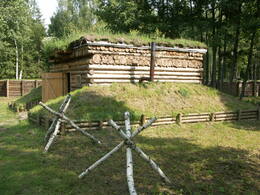
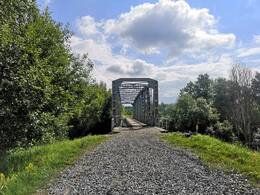

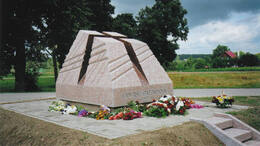
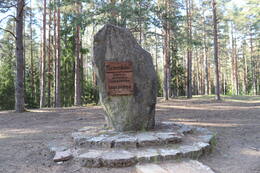
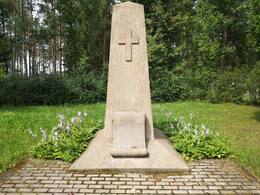
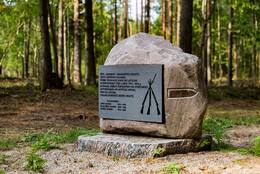
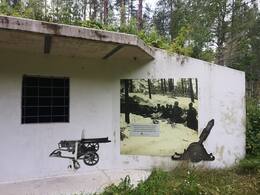
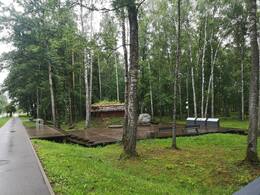
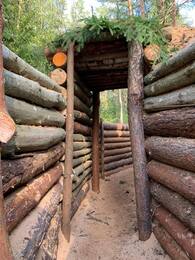
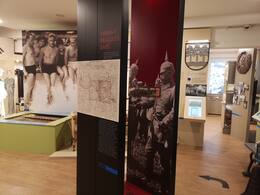
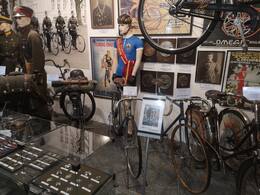
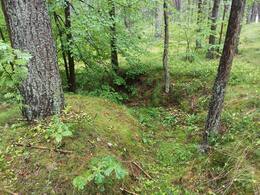
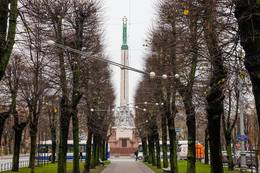
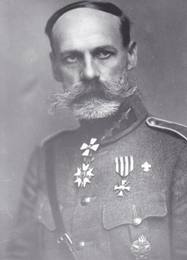
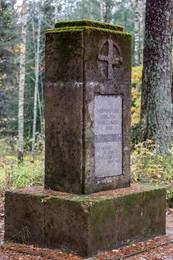
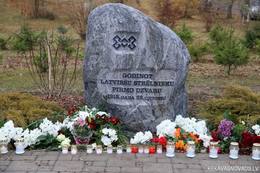
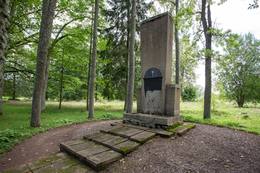
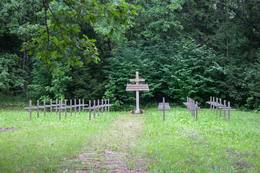
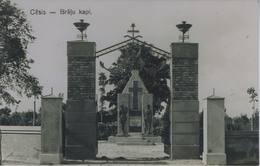
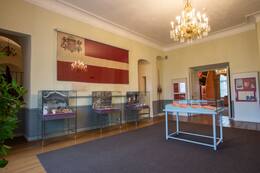
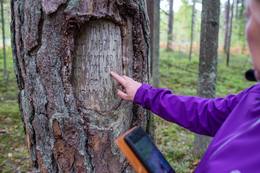
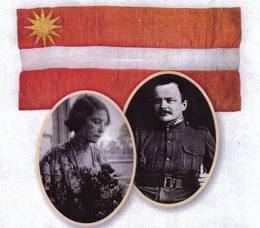
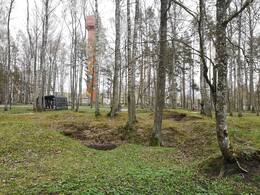
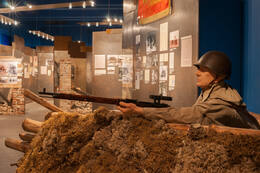
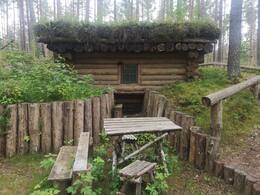
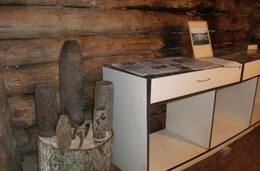
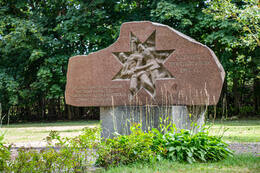
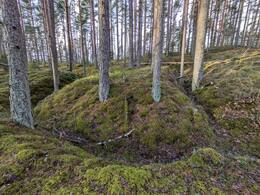
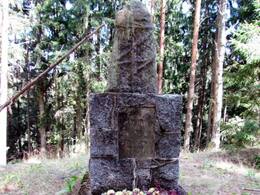
Palun teha parandused langenud Läti vibulaskjate nimekirjas. Minu vanaema vend Indriķis Kadiķis, Jēkabi poeg, suri 16. jaanuaril 1917, sündis Snæpelis